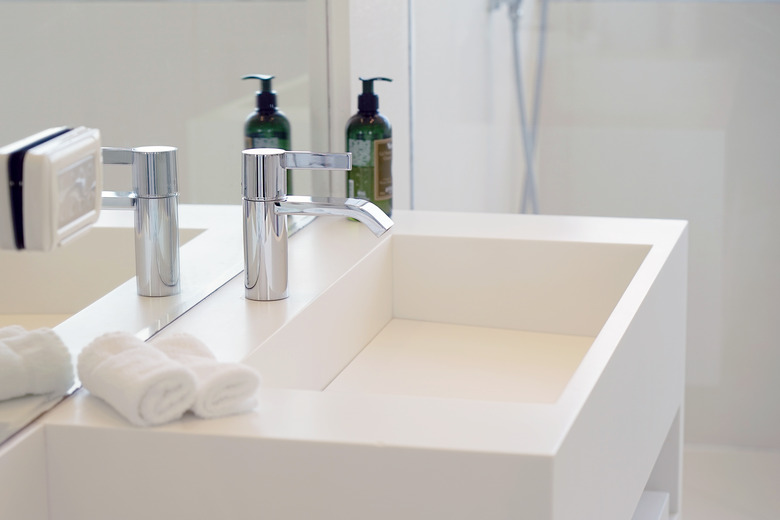Can Roaches Crawl Up Sink Drains?
We may receive a commission on purchases made from links.
Cockroaches are a common problem in North American homes. These flat, fast-moving nocturnal insects can fit through even tiny cracks and crevices and live on book-binding glue, tiny food particles and other trace materials.
Cockroaches may enter even very clean, well-sealed homes through holes for electrical wiring and plumbing in walls and floors, and they may live in and around sink drains. Although they are likely to enter homes through other means, sink drains hold a lot of attraction for cockroaches once they are inside.
Tip
Roaches may seek refuge in a sink drain, which is a food, water and shelter source, and they may crawl up into the sink from the drain, but they typically enter a house somewhere else.
Where Cockroaches Enter a Home
Where Cockroaches Enter a Home
Spaces around sink drains or floor grates provide access for cockroaches, which prefer dark, moist areas like crawlspaces, basements and wall interiors. Some species, like the brown-banded cockroach, are less than half an inch long as adults. Juvenile cockroaches can squeeze through floor drain grates, allowing them access to your kitchen or bathroom, but they are unlikely to enter through the sink.
Cockroaches Are Attracted to Moisture
Cockroaches Are Attracted to Moisture
Cockroaches can survive for long periods with little to no food, as long as they have moisture. Sink drains provide them with drinking water, both in and around the drain. Leaking or dripping faucets increase the amount of moisture available to the roaches, encouraging them to live in and around the drain. Any drain that traps water inside it could be a home for cockroaches.
Cockroaches Find Food in Drains
Cockroaches Find Food in Drains
Drains also feed cockroaches, which are capable of living on a wide range of organic material. Kitchen drains often trap scraps or traces of food debris from dishwashing, while bathroom drains can catch skin cells, hair and grow fungus or mold. Cockroaches often live in sink overflow cavities connected to the drain, as these provide easy access to food and water inside the drain but don't flood regularly.
Excluding Cockroaches From Drains
Excluding Cockroaches From Drains
While cockroaches are capable of fitting through very small holes, they can't pass through openings screened with mesh or solid material. When cockroaches are a concern, use drain covers at night to prevent these insects from making their home inside. Keep sinks and drains dry and clean to reduce water sources, and avoid putting food scraps into the drain itself. Fix all leaks and drips as soon as possible to discourage roach infestations.
You may be tempted to pour a chemical insecticide down the drain to kill roaches, but this may damage your plumbing. In addition, it's illegal to pour certain chemicals down drains. Use a roach insecticide only according to the label directions.
Preventing Cockroaches From Entering Homes
Preventing Cockroaches From Entering Homes
Cockroaches multiply best in environments that provide plenty of food, water and hiding space. By removing these factors, you can control the roaches.
Apply caulk or otherwise seal all cracks and crevices in your home, and reduce the number of dark, undisturbed locations where these insects can survive. Put all food away in sealed containers. Use cockroach traps to determine whether control methods are working effectively.
